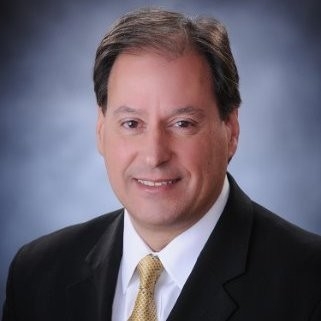Meet a GO Virginia Region 2 Council Member: Victor Iannello, Radiant Physics, Inc.
November 15, 2021

1. What was your first job and what did it teach you?
My first job was delivering newspapers, and it was like running a small business. I learned a lot about customer service, how to retain customers and generate new ones, and the importance of being reliable. It was a great way for a young person to learn about business.
2. What inspired you to start your own company, Radiant Physics?
I was the director of development for a company in Roanoke. From a technology and business point of view, I thought the direction the company was headed wasn't viable, and I decided to leave the organization and start my own company. I submitted some proposals on innovative ideas, and I began to win some Small Business Innovation Research awards with NASA and the Department of Defense. That really got me going.
3. What projects are you currently working on?
I spend most of my time with a start-up named Chorda Pharma. The company is dedicated to developing painkillers that don't use opioids, and we have a topical cream we are going to be taking to market soon.
4. What have you learned from being on the GOVA Region 2 Council?
I've learned a lot about the region and the role different organizations play in growing the economy. I've also learned that there's a lot of commonality across the Region 2 landscape. I've met some great leaders across the region, from the Roanoke and New River Valleys and from the Lynchburg area and Alleghany Highlands.
5. Do you have a favorite part or memory of being on the GOVA Region 2 Council?
We’ve had some interesting projects that require support from the entire region for them to go forward. I'd say ten years ago those projects wouldn't have been possible because there wasn't that level of collaboration across our region. I've been very heartened to see the leaders from all the sub-regions come together to promote projects. Some projects have benefited the entire region, and some have benefited smaller subregions. Even for those projects that are centered on a smaller subregion, it's been gratifying to see support for those projects throughout the entire region.
6. What skills have you found valuable to your work as a council member?
Having the willingness to meet with people outside the GOVA meetings and figure out commonalities and goals.
7. Is there anything that you would like to see GO Virginia Region 2 do more of in the future?
I think we need to be willing to take some more risks. I look for the opportunity to bring and discuss truly revolutionary projects that wouldn't otherwise be funded if GO Virginia didn't exist. That's easy to say, but it’s hard to identify these projects, which may be large, high-risk projects with very high upside potential.
8. What are some similarities between your role at Chorda Pharma and your work on the Region 2 Council?
As a region, we've determined that life sciences and health care is an important focus for Region 2, and the work I do with Chorda Pharma plays into that in a very big way. There's a tremendous amount of overlap.
9. What activities or hobbies do you like to do in your spare time?
I swim on a regular basis as my form of exercise. I recently got my private pilot license so I've been doing a lot of flying, which has been a lot of fun. I also have a drone I like flying and I enjoy amateur radio.
10. What do you most enjoy reading?
I've been gathering a lot of information about a lot of different things - scientific, political, even mystery. Malaysia Airlines Flight 370 disappeared back in 2014, and I've been heavily involved in researching the disappearance with an international group that's trying to crack that case. I’ve done a lot of research, and I’ve developed theories and written papers and articles which are published on my blog (mh370.radiantphysics.com). The blog has about 30,000 comments from people around the world, and the articles are often cited by news outlets. At this point, I think we have a pretty good idea of what happened. For those interested that don’t want to delve into the technical details, I think the best overview is an article by William Langewiesche for the Atlantic magazine.


